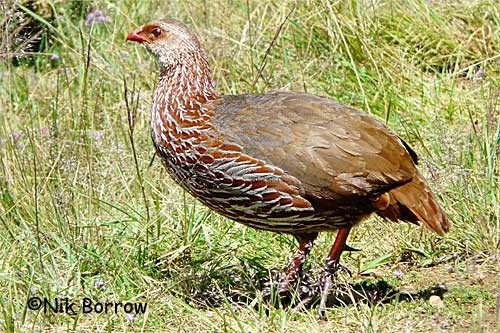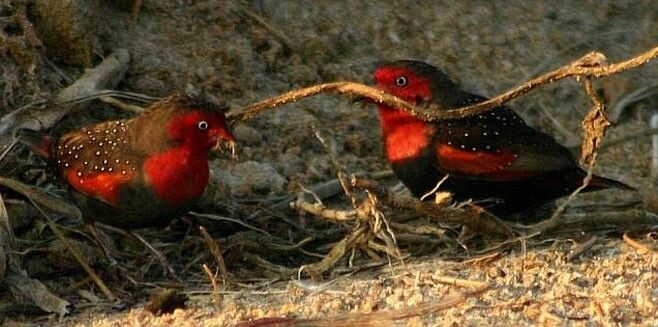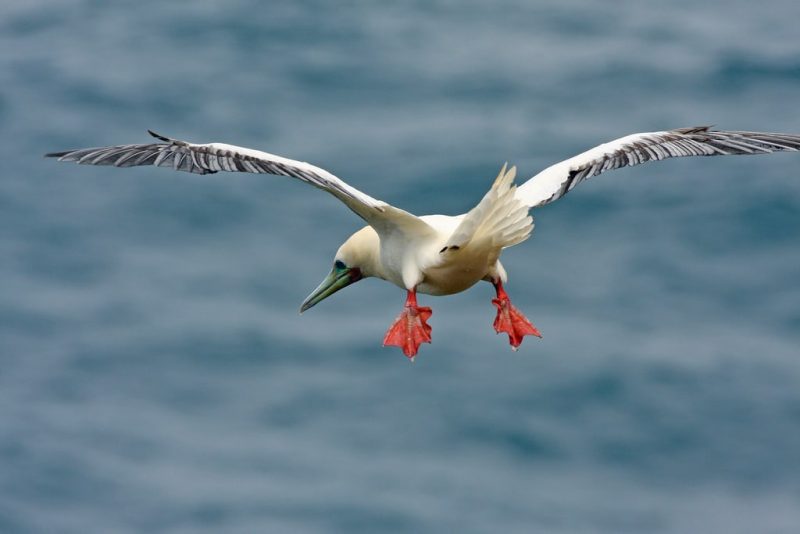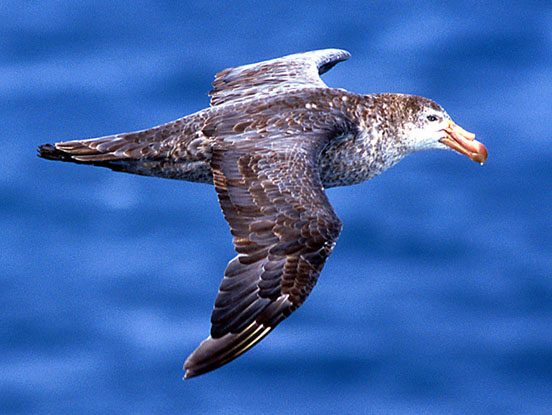Indigenous And Endemic Birds Of Kenya
Commonly referred to as bird’s paradise, Kenya has a broad range of more than 1,000 species of birds. As a result, the country attracts scientists, biologists and field researchers who have taken ornithology as an academic study. Although Kenyan endemic birds found exclusively in the region are few and far between, there are credible documents of the sightings of each of the species. Such reports provide detailed information on important recognition features, some behavioral traits as well as distributional points of each of the species. The endemic birds of Kenya are Jackson’s Francolin, William’s Lark, Hinde’s Pied Babbler, Taita Thrush, Sharpe’s Longclaw, Clarke’s Weaver, Tana River Cisticola, Aberdare Cisticola and Sokoke Scope-Owl.
Jackson’s Francolin
One of the birds that are relatively common in Kenya is Jackson’s Francolin. It is a bird widespread in the nation’s upper reaches of highland forests and Cherangani Hills as well as Mt. Elgon on the country’s border with Uganda. It appears on montane moorland, bamboo zone and giant heath on either side of the Rift Valley. This large montane francolin forages in thick shrubby growth and the nearby openings and often occurs on dirt roads and tracks during damp climates. The females are noticeably smaller than the males. Its feathers have bold streaks, chestnut above and white below. The juvenile is duller with barring on their bellies. Although common, this bird is rather secretive and shy.
William’s Lark
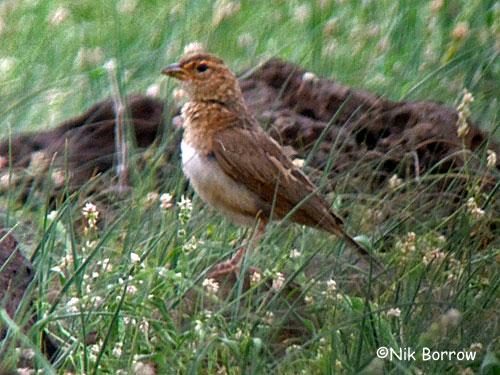
Williams Lark, Indigenous and endemic birds of Kenya Source: HBW
Larks are small terrestrial birds that are somewhat dull in appearance. However, the general coloration of its feathers matches the lava rocks and red soil of its habitat. It scuttles rodent-like among small shrubs and rocky plains north of Marsabit and east of Isiolo. Its proud display of flight is slow, labored and jerky in which body and tail hang vertically. They have a fantastic song of thin, scratchy notes with sharper ones toward the end. William’s Lark was discovered in Kenya as recently as 1955. Hence its ecology, threats, distribution and population parameters remain little known.
Hinde’s Pied-Babbler
Mainly confined to a small area East and South of Mt. Kenya, Hinde’s pied-babbler has many threats within its range. This bird is exclusive on the fringes of cultivation, river valleys, seasonal springs, and streams. Although it prefers the Lantana thickets in Kianyaga for cover, nesting and roosting sites, maize farms and coffee plantations are its preferred feeding sites. Where the Lantana thickets are lacking at Machakos, Hinde’s babbler appears largely confined to thick riverine Acacia woodlands. The density of the species is lower at the less intensively cultivated Machakos than at the intensively cultivated Mukurweini. Increased agricultural development coincides with the reduction in the range of this species.
Taita Thrush
Prevalent to the remnant Taita Hill forests of Kenya, the Taita thrush is a critically endangered species from the family of thrushes and is a distinct species. It is usually seen feeding on the ground and very rarely perches more than 3m above. It avoids secondary growth, cultivation, and scrub. The young of this species are duller and browner on scapulars and upperparts. The wing-coverts have orange tips and shaft streaks.
Sharpe’s Longclaw
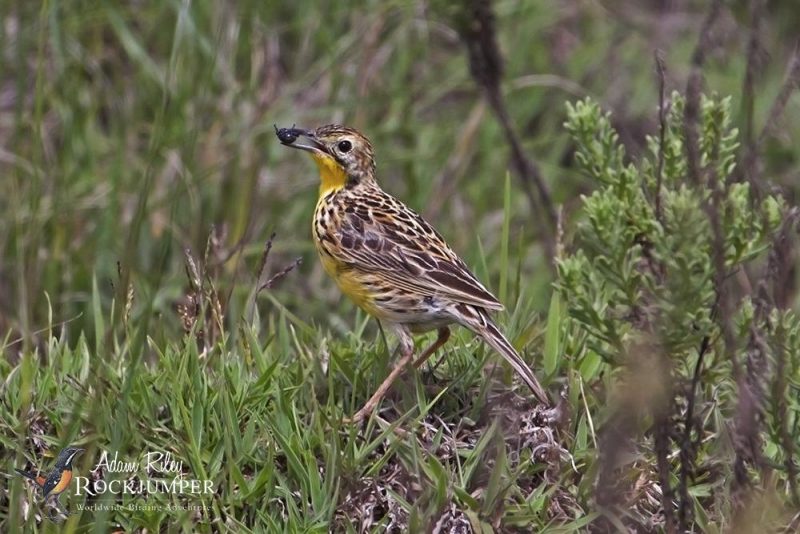
Longclaw Sharpes Source: HBW
The English name of Sharpe’s Longclaw came into being in the 19th century in memory of the British ornithologist Richard Bowdler Sharpe. There are only about 19,000 of these weaver-like birds left, and the bulk of them are in Mt. Elgon slopes, the Uasin Gishu grasslands, the Kinangop Plateau, and Mau Narok. Sharpe’s Longclaw is a very sedentary bird that depends on tussock grasses that grow in clumps or tufts in the dry habitats of high elevations for nesting, feeding, and protection from predators.
Clarke’s Weaver
A small and fragmented range of Clarke’s weaver is rife in coastal Kenya, north of Kilifi, with the largest sightings in Arabuko-Sokoke Forest and fewer in Dakatcha Woodland. However, the entire area of Woodland and vicinity will change because of plans to establish plantations of Jatropha for biofuel. Clarke’s weaver feeds high up on fruits, beetles, and caterpillars. They occur in noisy and erratic flocks of mixed species birds. This weaver bird is variably absent during the rains when it nests and raises its young elsewhere. Its breeding area is still a mystery.
Tana River Cisticola
Rumor has it that Tana river cisticola is abundant in Somalia, but it is baseless. This small and long-tailed bird is only rampant in the subtropical or tropical moist shrub-land and grasslands of Eastern Kenya. It has a short-pointed beak and a silver coloration with a sound similar to rattling. This cisticola is insectivorous. Its main diet is grasshoppers. Since the bird is considered to be extinct due to the destruction of its habitat, there is not much information available on its life cycle.
Aberdare Cisticola
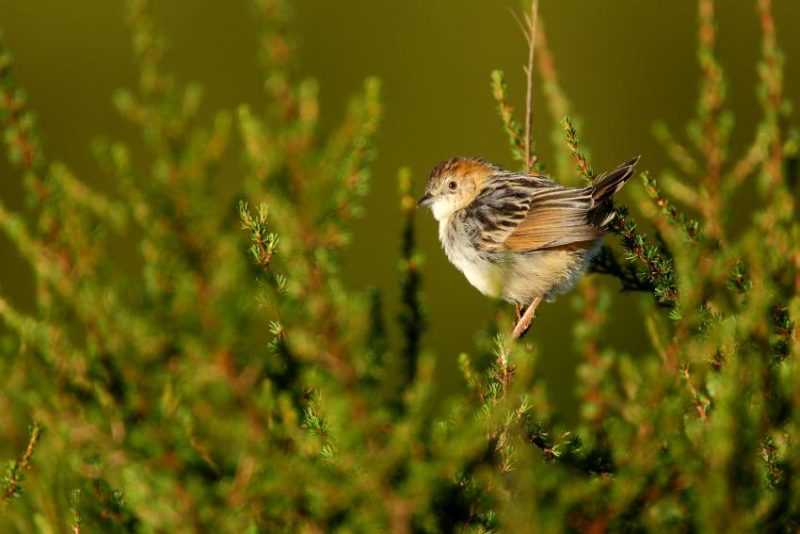
Aberdare Cisticola Source: HBW
The most peculiar feature of the Aberdare cisticola of Kenya is its short almost non-existent neck. This small bird, endemic to Central Kenya, has beautiful feathers streaked with white. It inhabits high grasslands and mountainous areas. The Aberdare cisticola forages the ground for insects and beetles with its sharp claws and strong bill. Although most of the habitats of this bird have legal protection, it is listed as endangered due to habitat loss to agriculture and livestock production.
Sokoke Scope-Owl
Discovered in 1965, the Sokoke owl is primarily pervasive in the Arabuko-Sokoke forest of coastal Kenya, occurring in dark brown or grey-brown plumage. The face is light rufous, with whitish and buffy eyebrows. The large eyes provide excellent eyesight for hunting for prey at night. This owl has a soft call, which it repeats ten times a minute, most frequently heard just before dawn or after dusk.
Serious birders
The best time to spot one of the endemic birds of Kenya is from October to April. They are also a regular feature while on a standard safari in the game parks of Kenya. But unlike a standard game drive, a birding safari allows one enough time at one’s own pace for a detailed study of the birds nearby. A birding safari includes parks like Lake Baringo, Kakamega, Lake Naivasha, Lake Nakuru and Meru. During such expedition, the guides cater for a structure where people can watch and observe the behavioural patterns of the birds with minimal interruptions.
5 Frequently Asked Questions About The Indigenous Birds Of Kenya
To receive a colourful digibook about birds with videos, images and text, please fill out the following form or simply email us on safaris@safari-center.com

